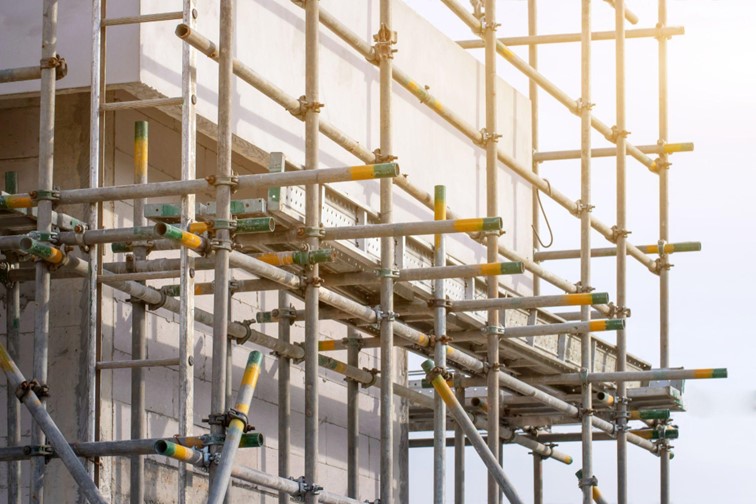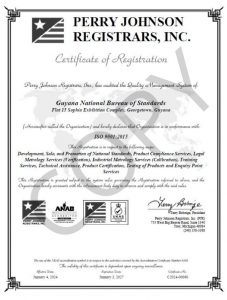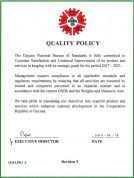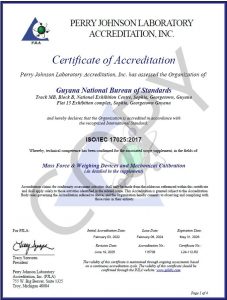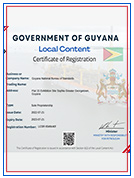The construction of residential and commercial buildings and other public infrastructure are ongoing across Guyana as homeowners, business-owners and the Government collectively continue to rapidly develop our country. These developments expose construction workers to many hazards, thus creating the need to implement safety standards. One of the most common hazards for these workers is the potential of falling from great heights leading to injuries or even death. To avoid such incidents, there is need for the erection of access scaffolds which are sturdy and reliable.
In 2022, the Guyana National Bureau of Standards (GNBS) adopted the Code of Practice for Access scaffold from the Canadian Standards Association (CSA) as a National Standard. The standard – GYS/CAN/CSA-Z 797-18 – provides criteria for the safe erection, use, and inspection of access scaffolds. It also addresses training of workers who are responsible for erecting the scaffolds.
According to the document, a scaffold is a temporary elevated or hanging platform and its structural members that is used to support workers and/or materials during construction, repair, or maintenance operations. However, it should not be used to support temporary loads or hold a structural element in place during the construction or repair. These structures can either be supported on a surface, mounted on wheels or hung from multiple points, but are not capable of moving vertically or horizontally.
The standard addresses key hazards, including fall hazards, structural instability, platform failures, and material handling problems. The supervisor is the person tasked with ensuring that the scaffold is built in accordance with the design drawings, having the correct components and materials and proper access points. Further, it is noted that the weather should be considered to ensure that the stability of the structure is not affected as workers maneuver to complete their daily tasks.
As the city’s population increases, some buildings are constructed in close proximity to others. However, it is specified that scaffolds erected at the side of these structures during the construction phase should not have walkways which are less than fifty-five (55) centimetres wide unless otherwise required by local regulations. The structure should also not impede any emergency equipment including fire hose, fire extinguisher, exit door or electrical panel.
To protect workers, the standard also recommends that in the vicinity of energized electrical conductors such as power lines, precautions should be taken to maintain the minimum safe approach distance from the conductors. Where the powerline voltage is unknown, scaffolds should not be erected until the voltage is verified or the powerlines are insulated, de-energised or relocated.
This National Standard is important to those in the construction sector to avoid workplace injuries or deaths.
The safety of workers at construction and other sites remains vital to protecting life and limb. In April, Guyana joined in observing Occupational Safety and Health Month under the theme: “’We are running out of time: Ensuring Safe and Healthy work now in a changing climate.”
The GNBS is urging employers and workers to ensure that safety standards are implemented in the workplace. The National Standard GYS/CAN/CSA-Z 797-18 – Code of Practice for Access Scaffold is available through the GNBS portal and can be purchased via the Canadian Standards Association website:
https://www.csagroup.org/store/product/Z797-18/
Finally, there are over twenty (20) National Standards relating to the construction sector which are available at the GNBS and can also be found on the portal gnbsguy.com. For more information on these standards, contact the Bureau’s Standardisation Department on telephone numbers: 219-0064 or 219-0065 or visit the GNBS website: www.gnbsgyorg. You can also WhatsApp us on +592 692 4627.

